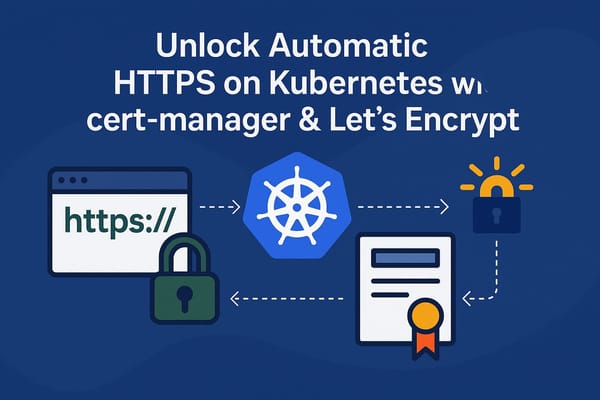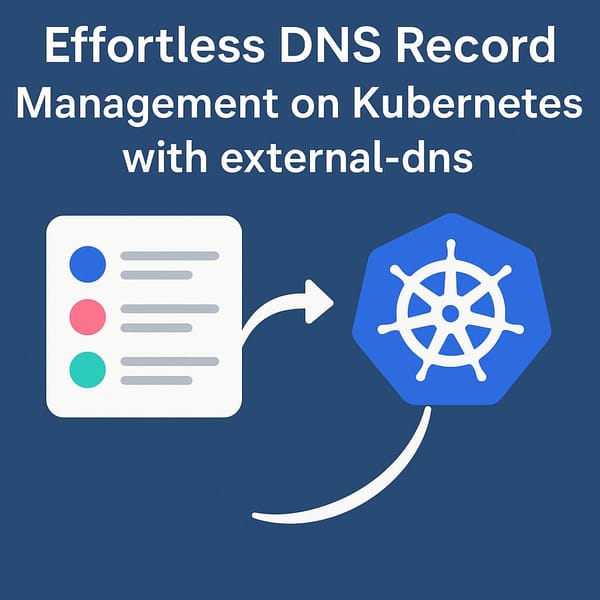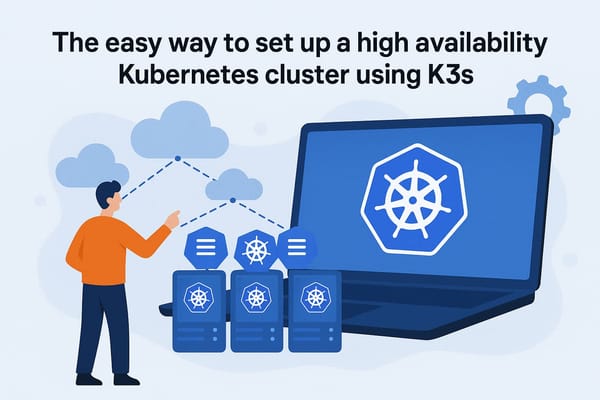Kubernetes is the de-facto standard for container orchestration, but installing and managing a production-grade cluster can feel daunting. Enter RKE2: the next-generation, CNCF-certified Kubernetes distribution from Rancher. RKE2 is lightweight, secure by default, and optimized for both on-prem and cloud environments. In this guide, you’ll spin up a simple multi-node cluster on two Linux machines (or VMs), one acting as the control plane (server) and the other as a worker (agent).
Prerequisites
Before diving in, ensure you have:
- Two Linux machines (or VMs)
• Each with at least 2 vCPU & 4 GB RAM
• SSH access configured (key-based is best) - A shared token for node-to-node authentication
- A DNS name (e.g.,
my-cluster.com) or IP address pointing to your control-plane node
1. Install the Control-Plane (Server) Node
The control-plane node hosts the Kubernetes API, scheduler, controller manager, and etcd datastore. We’ll bootstrap it first.
1.1 Create the RKE2 Configuration
- SSH into your primary server.
Populate /etc/rancher/rke2/config.yaml with:
token: my_very_long_token
tls-san:
- my-cluster.com # Your DNS name or public IP
node-taint:
- "CriticalAddonsOnly=true:NoExecute"
Create the directory and open the config file:
sudo mkdir -p /etc/rancher/rke2/
sudo nano /etc/rancher/rke2/config.yaml
Tip:Thetokenensures only nodes sharing the same secret can join.Thetls-sanentry lets certificates include your custom hostname.Tainting the control plane reserves it for critical system pods only.
1.2 Install and Start RKE2 Server
Run the one-liner installer and enable the service:
curl -sfL https://get.rke2.io | sudo sh -
sudo systemctl enable rke2-server.service
sudo systemctl start rke2-server.service
Check status:
sudo systemctl status rke2-server.service
2. Join Additional Control-Plane Nodes (Optional)
For high availability, repeat the above steps on more servers. In the config file, add the server endpoint:
token: my_very_long_token
tls-san:
- my-cluster.com
server: https://my-cluster.com:9345
node-taint:
- "CriticalAddonsOnly=true:NoExecute"
3. Install the Worker (Agent) Node
Worker nodes run your application workloads. Let’s add one now.
3.1 Create the Agent Configuration
SSH into the worker machine and create its config:
sudo mkdir -p /etc/rancher/rke2/
sudo nano /etc/rancher/rke2/config.yaml
Add:
server: https://my-cluster.com:9345
token: my_very_long_token
3.2 Install and Start RKE2 Agent
Run the installer in “agent” mode:
curl -sfL https://get.rke2.io | INSTALL_RKE2_TYPE="agent" sudo sh -
sudo systemctl enable rke2-agent.service
sudo systemctl start rke2-agent.service
Verify:
sudo systemctl status rke2-agent.service
4. Verify Your Cluster
Back on your control-plane node:
Check node status:
kubectl get nodes -o wide
Export the kubeconfig:
export KUBECONFIG=/etc/rancher/rke2/rke2.yaml
You should see both your server and agent listed, each with a Ready status.
Congratulations!! You now have a functional RKE2 Kubernetes cluster! From here, you can deploy containerized apps, set up CI/CD pipelines, and explore advanced features like high availability, custom storage classes, and monitoring. Happy clustering!








Member discussion